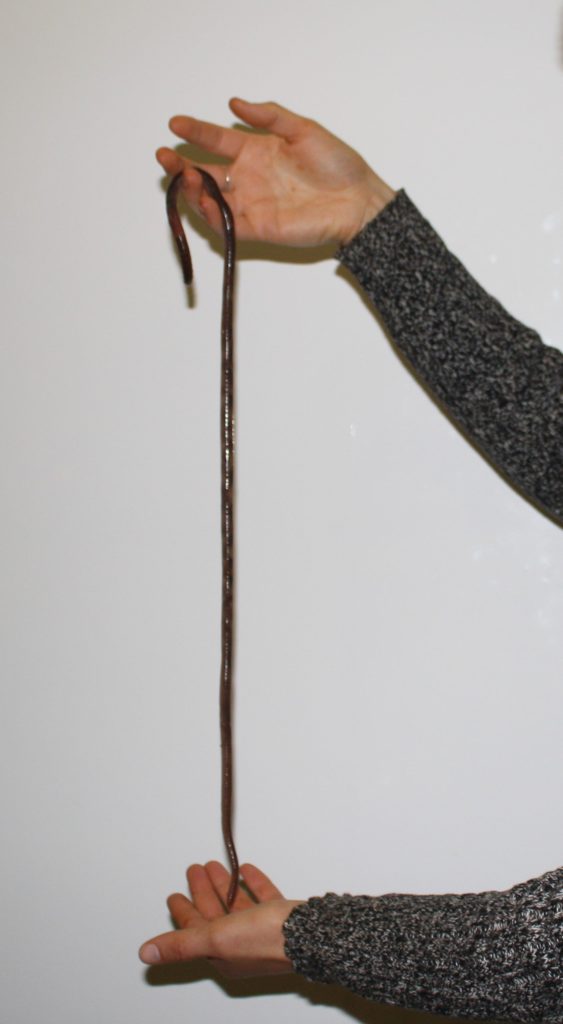A revealing American study that might exist here too. Sub-surface soil activities in regard to worms is not something that readily comes to mind, let alone alien worm species. An interesting read.

The jumping worm (Amynthas agrestis) is one of at least 70 alien earthworm species in North America
>>There’s been a takeover of North America’s soil by scores of non-native earthworm species this past century. It’s time we pay more attention to the invaders and their potentially major impact on the continent’s ecosystem, says a new Stanford study.
Since the late 1800s people have been importing earthworms to the shores of the Americas from nearly every other continent in order to bolster farms and gardens. The worms help in this regard because they make tunnels that allow water, nutrients, and air to penetrate the soil and their excrement acts as fertilizer, aiding the growth of crops and other plants. They’re so useful, in fact, that they may one day become true aliens on the planet Mars.
While the intention of this natural soil-improvement method has been good, Stanford University researchers along with colleagues from Sorbonne University and other institutions now say the consequences can be quite bad. That’s because non-native earthworms often feed on material above, rather than below, ground, which can dramatically change native ecosystems.
It’s also been found that some earthworms can alter the pH, texture and nutrients of their soils to such a degree that it makes it difficult for trees like the sugar maple to thrive. The alien jumping worm, for example, can dry out the soil to such a degree that native plants can no longer grow. Such alterations can, in turn, disrupt the food web and make way for invasive plants to take hold.
Alien earthworms are also problematic, say the researchers, because they were simply dragged out of their native habitats and plunked into new ecosystems in a way that didn’t allow evolution to take its course.
“Soil taxa such as earthworms are iconic in good land management practices,” wrote the researchers in a study published in the journal Nature Ecology & Evolution. “However, their introduction in places where species did not co-evolve with them can trigger catastrophic changes. This issue has been largely ignored so far in nature management policies because of the positive image of soil taxa and the lack of knowledge of the magnitude of soil fauna introductions outside their native range.”
Worm records
To see just how prevalent alien earthworm species are, the Stanford team analyzed worm records from 1891to 2021 (yes, worm records are a thing), combined that with statistics from the interception of alien earthworms at the US border between 1945 and 1975, and fed all of that data into a machine learning model to track the spread of non-native worms in North America.
The researchers concluded that at least 70 different species of alien earthworms are present in 97% of the continent’s soils, comprising 23% of its 308 total worm species. This is nearly triple the number of non-native fish, four times the number of non-native mammals, and 10 times the number of insects and arachnids. The study also revealed that alien earthworms actually account for 12 of the 13 most prevalent worm species.
Furthermore, the study found that there were more alien earthworms in the northern part of the continent, with Canada having an alien worm population about three times that of the native species.
While the researchers agree that not all alien earthworms are destructive, they call for greater oversight and study of the issue and the way in which these non-native species could proliferate and dramatically alter native ecosystems.
“These ratios are likely to increase because human activities facilitate the development of alien species that threaten native earthworm species, a phenomenon still largely overlooked,” said study lead author Jérôme Mathieu, an associate professor of ecology at the Sorbonne.
“This is most likely the tip of the iceberg,” added study co-author John Warren Reynolds of the Oligochaetology Laboratory and the New Brunswick Museum in Canada. “Many other soil organisms may have been introduced, but we know very little about their impacts.”
https://newatlas.com/science/alien-earthworms/
